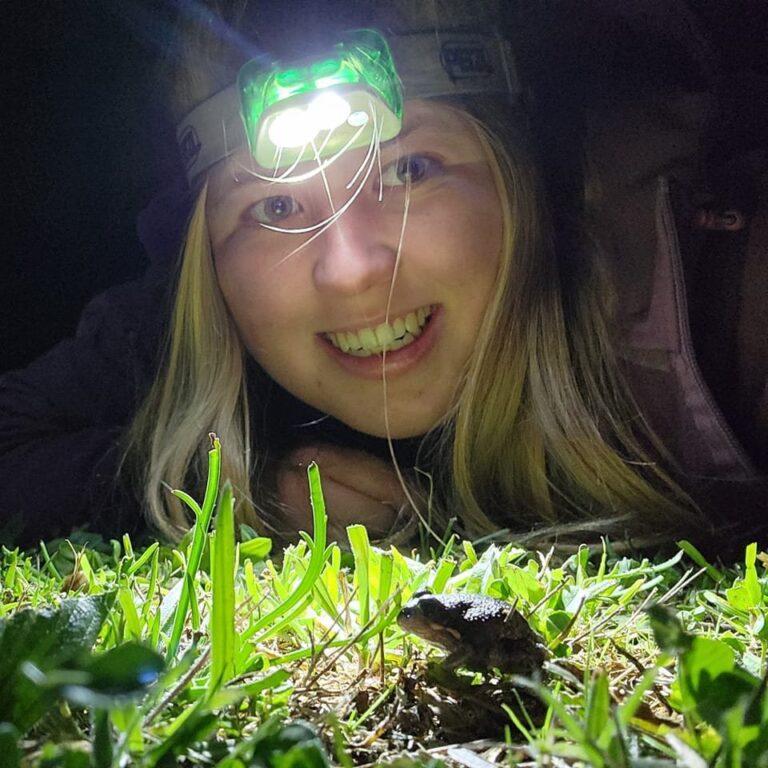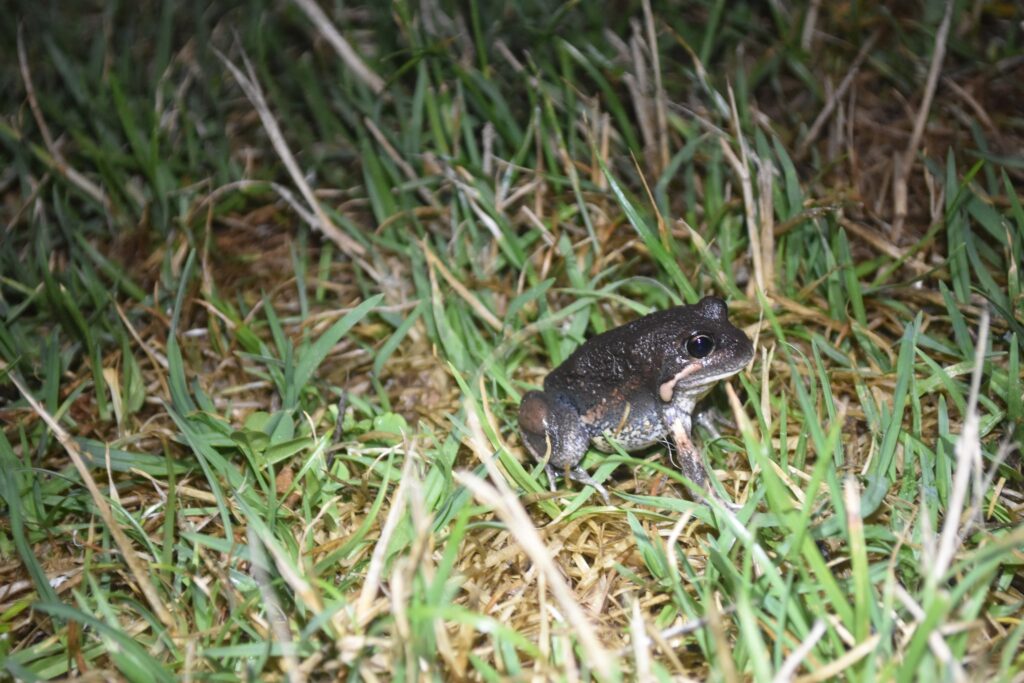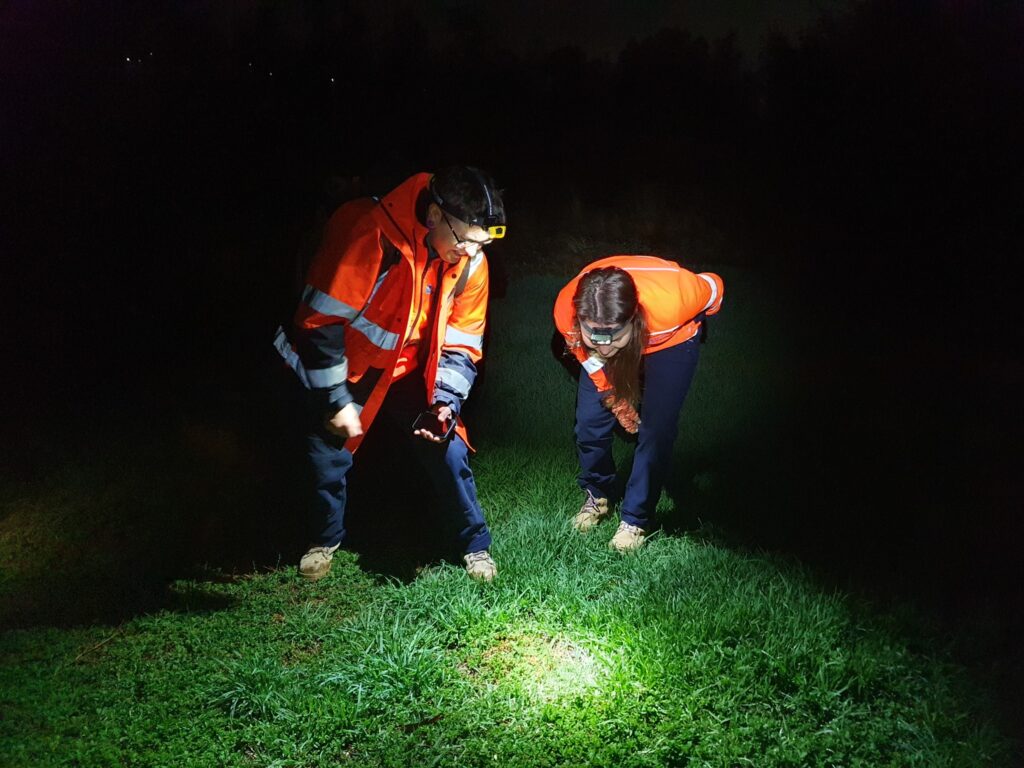Frog Surveys and Report

A lack of repeated surveying and reporting has led to a knowledge gap regarding frog species and populations within Wyndham’s local waterways. The Werribee River Association has launched a report following the Frog Engagement & Protection Project, led by Erin Bradley, local environmentalist, and long-term member of the Werribee River Association. With the support of Wyndham City and 61 volunteers from the local community surveys confirmed that several frog species were present in Wyndham waterways.
Upon completion of this project, which ran between August 2022 the end of May 2023, the distribution of our native frog species and their populations is more understood. This was achieved not only by the survey efforts of Erin and her dedicated group of volunteers but through community engagement and interactive presentations that reached over 500 students within local schools.
Survey efforts highlighted the detection of 561 visually detected frogs over 5 sites which were Grahams Wetland Reserve (Werribee South), Cunninghams Wetland (Point Cook), Harpley Discovery Trail Boardwalk (Werribee), Skeleton Creek (Hoppers Crossing) and Davis Creek (Tarneit).
The counts of native frog species over all sites included 1 Striped Marsh Frog, 80 Common Eastern Froglets, 103 Growling Grass Frogs, 137 Eastern Banjo Frogs (Pobblebonk), 240 Spotted Marsh Frogs. With special mention to the detection of 255 frogs within Graham’s Wetland Reserve, including 53 Growling Grass Frogs (and even more heard).
Growling Grass Frogs (Litoria Raniformis) are listed as an endangered species in Victoria with urban development which has led to habitat loss around Melbourne’s fringe and is the leading cause of their decline. Detection of this endangered species and its thriving friends the Spotted Marsh Frogs and Pobblebonks within Graham’s Wetland Reserve reinforces the importance of preserving, maintaining, and protecting suitable habitat areas.
Repeated surveying efforts, community engagement and advocating for the protection or development of suitable habitats for our native frog species is key to their preservation. Repeated surveying and reporting on populations and distributions of a species produces valuable data for conservationists to advocate for the protection and development of crucial habitats. Furthermore, community engagement harnesses a sense of stewardship for sometimes forgotten bulb eyed slippery critters such as frogs.
Members of the community can get involved in frog detection, protection, and advocacy in several ways. Whether it be downloading the Melbourne Water Frog Census App where users can upload a sound recording or image at a location when out and about or volunteering with organised projects like the Frog Engagement & Protection Project. Or maybe you want to design your own frog friendly habitat in your own back yard, or simply get to know what frogs are about your area and where to find them. Further links below will lead you to the above-mentioned resources to get you hopping into action ensuring frogs are not forgotten.

